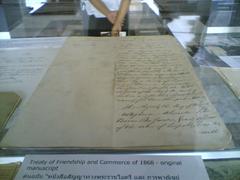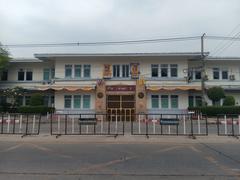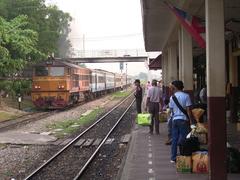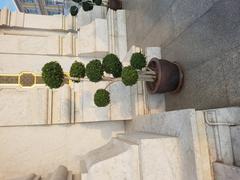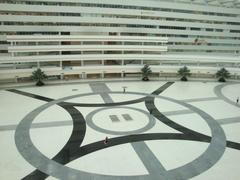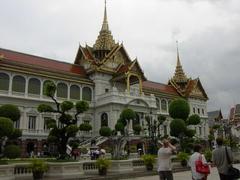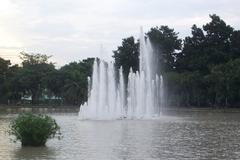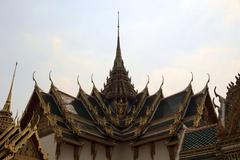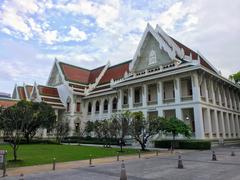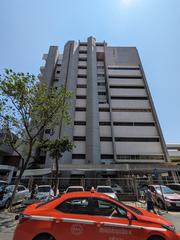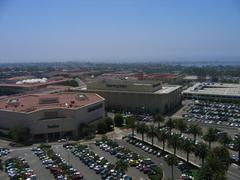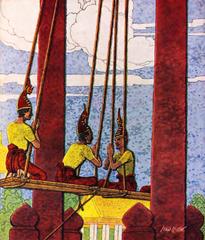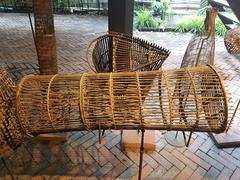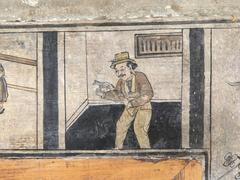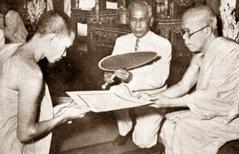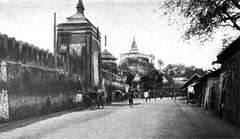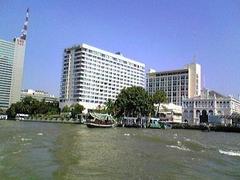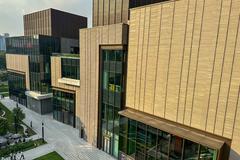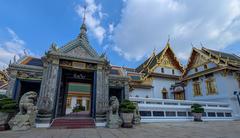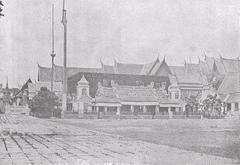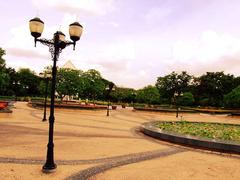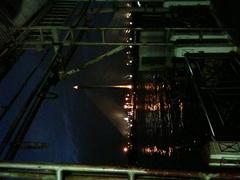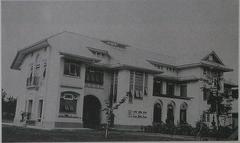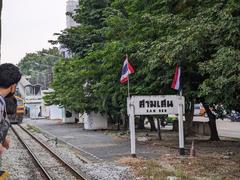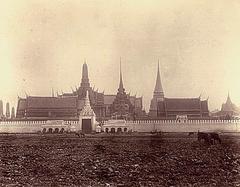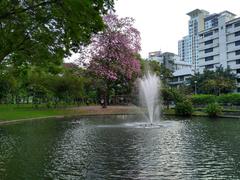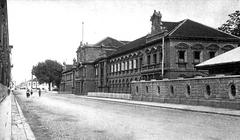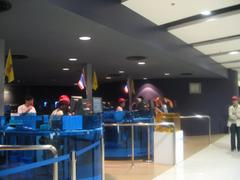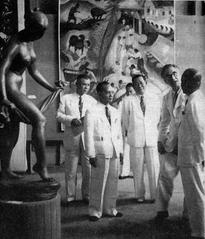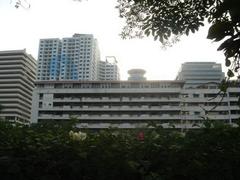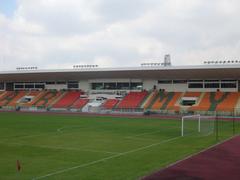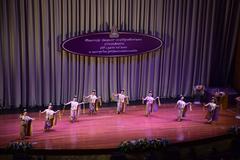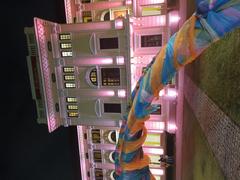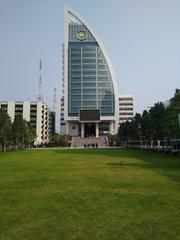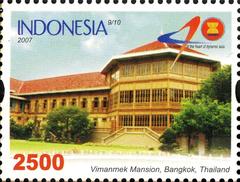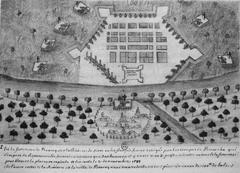Comprehensive Guide to Visiting Saphan Phan Fa Lilat, Bangkok, Thailand
Date: 25/07/2024
Introduction
Phan Fa Lilat Bridge, known locally as สะพานผ่านฟ้าลีลาศ, is a historic and cultural gem situated in the heart of Bangkok, Thailand. Spanning the Khlong Bang Lamphu canal, this bridge serves as a significant landmark, connecting Rattanakosin Island with other parts of the city. Constructed during the reign of King Rama V (King Chulalongkorn) from 1868 to 1910, the bridge exemplifies a blend of traditional Thai architectural elements and Western engineering techniques, reflecting the cultural and technological exchanges of the early 20th century (Wikipedia). This comprehensive guide aims to provide visitors with detailed information about the bridge’s rich history, architectural significance, and practical visitor information, ensuring a memorable experience at this iconic landmark.
Table of Contents
- Introduction
- Historical Background
- Visitor Information
- Visitor Tips
- Preservation and Restoration Efforts
- Modern-Day Significance
- FAQ
- Conclusion
- Call to Action
Historical Background
Early Conception and Construction
The Phan Fa Lilat Bridge was constructed during the reign of King Rama V (King Chulalongkorn) from 1868 to 1910. This era marked significant modernization efforts, including infrastructure development to support the rapidly growing city. The bridge was part of a broader initiative to enhance transportation and connectivity within Bangkok, transitioning from a city dominated by canals to one with an extensive road network.
Architectural Design and Features
The Phan Fa Lilat Bridge exemplifies early 20th-century engineering and design. It combines traditional Thai architectural elements with Western engineering techniques, reflecting the cultural and technological exchanges of the period. The bridge’s design includes ornate railings and decorative elements characteristic of Thai aesthetics, while its structural components demonstrate Western engineering influences.
Strategic Importance
Strategically, the Phan Fa Lilat Bridge is crucial to Bangkok’s connectivity. It links different parts of the city, facilitating the movement of people and goods. Its location is significant as it connects the historic Rattanakosin Island, home to many of Bangkok’s important cultural and political landmarks, with other parts of the city. This connectivity has been vital to the city’s development and urbanization.
Role in Historical Events
Throughout its history, the Phan Fa Lilat Bridge has witnessed numerous significant events. Notably, it played a key role during the 1932 revolution, marking Thailand’s transition from an absolute monarchy to a constitutional monarchy. The bridge has also been a focal point during various political protests and demonstrations, reflecting its symbolic importance in Thai political life.
Visitor Information
Phan Fa Lilat Bridge Visiting Hours and Tickets
The Phan Fa Lilat Bridge is open to visitors 24 hours a day, with no admission fee required.
Special Events and Guided Tours
While the bridge itself does not offer guided tours, several nearby landmarks, such as Wat Saket (Golden Mount) and the Democracy Monument, often include the bridge in their guided tour itineraries. Check local tour providers for more information.
Photographic Spots
The bridge offers excellent photo opportunities, especially at sunrise and sunset when the lighting is most favorable. The ornate details of the bridge and the surrounding cityscape make for stunning photographs.
Visitor Tips
Best Time to Visit
The bridge can be visited any time of the year, but the cooler months from November to February are particularly pleasant. Early mornings and late afternoons are ideal for avoiding the midday heat.
Nearby Attractions
The bridge is near several important landmarks, including the Democracy Monument, Wat Saket (Golden Mount), and the historic Rattanakosin Island. Visitors can easily combine a visit to the bridge with these attractions.
Accessibility
The bridge is accessible by various transportation modes, including taxis, tuk-tuks, and public buses. It is also within walking distance of several key areas in central Bangkok.
Cultural Etiquette
When visiting the bridge and nearby cultural sites, it is important to dress modestly and respect local customs. This includes covering shoulders and knees and behaving respectfully in sacred or historical areas.
Preservation and Restoration Efforts
Ongoing efforts to preserve and restore the Phan Fa Lilat Bridge aim to maintain its structural integrity while preserving its historical and architectural features. Restoration projects have included repairing structural components, restoring decorative elements, and ensuring it remains safe for use by pedestrians and vehicles.
Modern-Day Significance
Today, the Phan Fa Lilat Bridge remains an important part of Bangkok’s infrastructure. It continues to serve as a vital transportation link, while also standing as a monument to the city’s rich history and cultural heritage. The bridge is a popular spot for both locals and tourists, offering a glimpse into Bangkok’s past and its ongoing development.
FAQ
Q - What are the visiting hours for Phan Fa Lilat Bridge?
A - The bridge is open 24 hours a day, with no admission fee required.
Q - Are there any guided tours available for the bridge?
A - While the bridge itself does not offer guided tours, nearby landmarks often include the bridge in their tour itineraries. Check with local tour providers.
Q - What is the best time to photograph the bridge?
A - Sunrise and sunset offer the most favorable lighting for photography.
Q - How can I get to Phan Fa Lilat Bridge?
A - The bridge is accessible by taxis, tuk-tuks, public buses, and is within walking distance of central Bangkok.
Conclusion
The Phan Fa Lilat Bridge is more than just a functional piece of infrastructure; it is a symbol of Bangkok’s historical evolution and cultural richness. Its construction during the reign of King Rama V, its role in significant historical events, and its ongoing preservation efforts all contribute to its enduring significance. For visitors to Bangkok, the bridge offers a unique opportunity to connect with the city’s past while enjoying its vibrant present.
Call to Action
For more updates and information on Bangkok’s historical sites, download our mobile app Audiala, check out other related posts, and follow us on social media.
References
- Wikipedia contributors. (n.d.). Phan Fa Lilat Bridge. In Wikipedia, The Free Encyclopedia. Retrieved July 25, 2024, from https://en.wikipedia.org/wiki/Phan_Fa_Lilat_Bridge
- Tourist Bangkok. (n.d.). City Transport - Canal Boat. Retrieved July 25, 2024, from https://touristbangkok.com/city-transport/canal-boat-bangkok/
- Your Asia Travel. (n.d.). How to get around Bangkok - Bangkok Water Bus Guide Routes, Fares, Tips & Tricks for Travelers. Retrieved July 25, 2024, from https://yourasiatravel.com/how-to-get-around-bangkok/bangkok-water-bus-guide-routes-fares-tips-tricks-for-travelers/
- Power Mag. (n.d.). Old Bangkok City. Retrieved July 25, 2024, from https://powermag.kingpower.com/power-mag/power-lifestyle/old-bangkok-city-en/
- Koktail Magazine. (n.d.). Bridges. Retrieved July 25, 2024, from https://www.koktailmagazine.com/content-detail/Bridges
